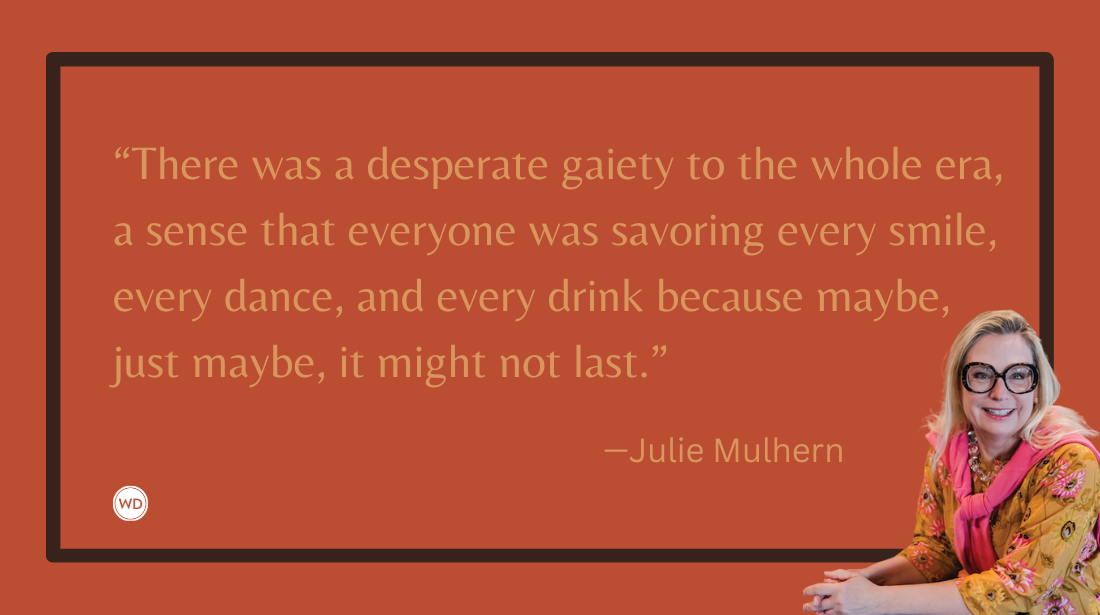How to Write Intimate Scenes Without the Cringe
Author Natali Simmonds shares strategies for writing intimate scenes in fiction, regardless of genre or heat level, without the cringe.
Romance and sex are two of the most emotionally resonant and intimidating elements an author can master. Intimate scenes can elevate a story, reveal a character’s motivations and vulnerabilities, and carry enormous emotional weight. But, as we all know, writing them can feel like stepping naked into the street. It’s totally natural to ask yourself: What if it’s too much? What if it’s not enough? What if it says something about me?
I’ve written dozens of sex scenes, alone and with my writing partner, Jacqueline Silvester (under our pen name, Caedis Knight) and the number one thing readers and other authors ask me is: ‘How do you not get embarrassed?’
The truth is, no one is scrutinizing these scenes the way you think they are. If you do it well enough your readers will be so deeply invested in the story and characters they won’t be imagining the author behind the words. Writing sex, like any scene that involves tension, physicality, and risk, is about truth, not titillation. So to get past the ‘Oh god, what if my mother reads this’ fear, simply treat intimate scenes the way you’d treat writing a battle, confrontation, or any other action scene that moves the plot forward: with attention to pacing, emotion, character development, and consequences.
Do you need sex in your book? If so…how much?
Not every story requires sex, and not every romance needs to be physical. When planning your book your first step is asking yourself whether intimacy belongs there in the first place. When used well, sex deepens plot and character, introducing complications, shifts in power dynamics, as well as strengthening or fracturing emotional bonds. The one thing it should never be is filler. If your intimate scene doesn’t add something essential to the story, it’s better left unwritten.
But, if you do decide to include sex, how much should you show? That depends entirely on your genre, tone, and audience. When writing erotic fiction, sex is the story, explicit and central. In romance, it may be graphic or gently suggestive, but it always prioritizes emotional connection. Other stories may require a slow fade to black. Regardless of heat level, a scene must feel inevitable, earned, and emotionally truthful.
It’s not just what you write that matters, but how.
Every genre differs, as does the demographic of your readership, so understand what your audience wants and needs from your story and deliver accordingly. Globally, women account for roughly two-thirds of fiction sales, therefore you must ensure the emotional arc and the female gaze take precedence. If you want your female readers to connect with the romance, then the pleasure should be female-centric, and to do this it’s vital that you really understand what women enjoy, crave, yearn for, need, and expect.
Age and circumstances matter too. Readers of young adult fiction, for instance, are invested in coming of age stories, including characters and situations they can empathize with. Consent, emotional readiness, and respect are vital in this genre. Likewise, a queer audience requires authenticity, which means writing beyond your own lived experience demands research, sensitivity, and listening to your audience (or avoid it to stick to what you know).
Characters, pacing, and dialogue.
At the center of any compelling intimacy is character. Two people reaching toward each other (emotionally, physically, or both) must do so in a way that’s true to who they are. When it comes to characters, a timid virgin and a magical, confident immortal won't experience intimacy the same way, and your writing should reflect that. Some characters soften during sex. Others reveal hidden sides; dominance, vulnerability, even fear. The bedroom is a stage for emotion, power, and motive. What do your characters want? Is this moment about love, revenge, affirmation, escape? What happens after matters just as much as what happens during.
When it comes to romance, pacing is everything. A rushed relationship feels hollow and one dragged out too long can frustrate the reader. The most satisfying intimacy is the culmination of longing, hesitation, tension, and risk. Small gestures matter—brushed fingers, loaded glances, silences charged with meaning. Readers crave the slow build as much as the release. Let anticipation do the heavy lifting. When the moment arrives, it should feel like the only possible outcome for those two characters.
Dialogue, too, carries immense weight. The wrong words can pull readers out of the moment; the right ones can take their breath away. Know your characters. Know how they speak (not just in public, but in vulnerability). Are they poetic, clumsy, raw? Do they speak at all? A whispered confession can carry more weight than paragraphs of exposition. Let the tone of the scene dictate how much your characters say, and remember that silence is often more revealing than speech.
It’s easy to get it wrong.
Even with careful crafting, it’s easy to get intimacy wrong. Many authors have veered into the absurd or grotesque, unintentionally drawing laughter or discomfort instead of connection (look up the now-defunct Bad Sex in Fiction awards to see how not to do it).
Less is often more. For instance, avoid metaphors that obscure rather than clarify. There’s no need to describe genitals with elaborate similes or euphemisms, and you don’t have to spell everything out. Trust your reader’s imagination; suggest, evoke, let them feel their way into the scene.
Above all, remember that your goal isn’t to shock or satisfy some arbitrary requirement, it’s to make your readers feel. Desire, tenderness, heartbreak, or catharsis, whatever you hope your readers get from your story ensure you root your romance in emotion, not anatomy. Don’t reduce your characters to physical responses. Show us their humanity, their hesitations, their hunger, and their fears. Let the physical act reflect an emotional truth.
Don’t forget this isn’t about you.
And finally, although writing intimacy may feel very personal, remember that the story belongs to your characters. If a scene exists only to fulfill the fantasy of the writer, readers will feel it. And yes, it’s OK to feel a little…ignited…by your own writing. If you’re not reacting to your scene, then your readers won’t!
Writing intimacy takes courage. But done well, it can transform a story and leave your readers moved, breathless, and longing for more. Strip away the shame, lean into authenticity, and write with the same vulnerability you’re asking of your characters.
Check out Natali Simmonds' The Ex I Buried here:
(WD uses affiliate links)









